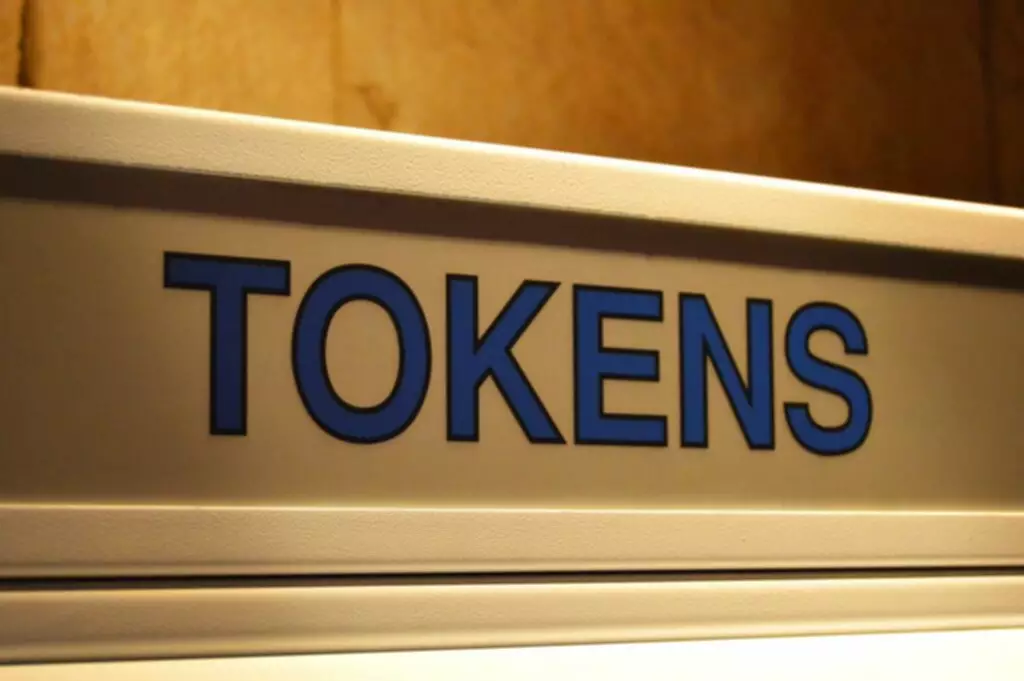Content
Actors monitor events on the source chain and generate cryptographic inclusion proofs about past events that were recorded on that chain. There is a requirement for some actor to “relay” What is a Blockchain Bridge the block headers and proofs. While it is possible for a user to “self-relay” transactions, there does exist a liveness assumption that relayers will continuously forward data.
If you know any other DeFi cross chain bridges which is not listed here then make a mention in the comments below. Moonbeam project is an Ethereum https://xcritical.com/ compatible smart contract parachain on Polkadot network. A wrapped token will be created and the value will be bridged between both the chains.

You can basically bridge any any ERC-20 token onto NEAR – A developer friendly, low cost and infinitely scalable platform for decentralized applications. The goal is to bring more liquidity onto the network by enabling token holders to transfer their assets across the bridge to be used in decentralized applications in variety of circumstances. Furthermore, the best bridges will be the most secure, interconnected, fast, capital-efficient, cost-effective, and censorship-resistant. These are the properties that need to be maximized if we want to realize the vision of an “internet of blockchains”. SushiSwap also recently launched a cross-chain bridge that enables you to interact and facilitate transactions with other DeFi protocols. Arbitrum One Bridge is a side chain L1/L2 token bridge that connects Ethereum L1 and Arbitrum L2.
Ethereum Protocol
Along with that we’ll also highlight top projects that are building bridges between chains. Using these tools you can potentially connect to any type of chain and in any direction allowing you to transfer assets in a permission less way. Web3 has evolved into an ecosystem of L1 blockchains and L2 scaling solutions, each designed with unique capabilities and trade-offs. As the number of blockchains protocols increases, so does the demand to move assets across chains.
- Let’s say you have ETH on Ethereum Mainnet but want cheaper transaction fees to explore different dapps.
- Light clients & relays are also strong with statefulness because header relay systems could pass around any kind of data.
- By using bridges in DeFi you can experience the power of cross-chain.
- Alternatively, L1s like Solana and Avalanche are designed differently to enable higher throughput but at the cost of decentralization.
- Using deBridge you can bridge any arbitrary assets, scale up your protocol, and build new types of cross-chain interoperability applications on top of a truly decentralized infrastructure.
- Once the assets are transferred you can use them to stake, earn yield and perform variety of DeFi activities on the network of your choice.
It allows users to access variety of decentralized finance applications across various networks. You can use these bridges not only to perform cross chain token swaps. Once the assets are transferred you can use them to stake, earn yield and perform variety of DeFi activities on the network of your choice. DeBridge is a decentralized standard for cross-chain interoperability and liquidity transfers. DeBridge is a cross chain bridge that uses Oracles to broadcast transactions across the chain.
Tezos Wrap Protocol Bridge
Alternatively, L1s like Solana and Avalanche are designed differently to enable higher throughput but at the cost of decentralization. But, what do you do if you want to make a similar exchange to use a different blockchain? Let’s say you want to exchange ETH on Ethereum Mainnet for ETH onArbitrum. Like the currency exchange we made for EUR, we need a mechanism to move our ETH from Ethereum to Arbitrum.
Only if you understand you should access these cross-chain bridges or any decentralized finance applications in general. Multichain.xyz Multichain swap; as the name suggest it is a cross chain bridge enabling bi-directional token transfers across multiple blockchains. Other than protocols with bridging solutions there are also exchanges both CEX and DEX providing cross chain swap functionality which you can use to swap assets between a myriad of networks.
With a great deal of value flowing across these blockchains a connection between these network becomes essential to ensure scalability and to bring connectivity across the DeFi ecosystem. Bridges are crucial to onboarding users onto Ethereum L2s, and even for users who want to explore different ecosystems. However, given the risks involved in interacting with bridges, users must understand the trade-offs the bridges are making. Bridges exist to connect blockchains, allowing the transfer of information and tokens between them. For Ethereum to scale and keep up with demand, it has required rollups.
However it is important to keep in mind that the features and the underlying technology behind these protocols are still in the early beta stage. You need to conduct your own research and you should understand the DeFi risksbefore using these platforms. Binance bridge is a bridge solution by Binance which users can use to swap BEP20 tokens from BSC to ERC20 on Ethereumand ERC20 to BEP20. One recent hack was Solana’s Wormhole bridge, where 120k wETH ($325 million USD) was stolen during the hack.
For wrapping that is to transfer from ETH to XTZ you need Metamask. For unwrapping that is to transfer back from XTZ to ETH network you need to have extensions such as Temple Wallet, Spire or a mobile AirGap Wallet. Other than Binance Smart Chain network and Ethereum network it also supports Solana, TRX and OMNI network.

In order to transfer tokens across chains using these bridges all you have to do is connect your Web 3 wallet like Metamaskor Trust Wallet. Just recently we’ve made a post explainingwhat are bridges and how cross chain swaps work? You can read that to know more about blockchain bridges where we also mentioned the benefits of bridges in the DeFi ecosystem. Let’s say you want to own native Bitcoin , but you only have funds on Ethereum Mainnet. However, WBTC is an ERC-20 token native to the Ethereum network, which means it’s an Ethereum version of Bitcoin and not the original asset on the Bitcoin blockchain.
Blockchain Bridges: Building Networks Of Cryptonetworks
When you transfer tokens across the chain oracles read the transaction, lock them in smart contract and issue a wrapped token on the destination chain. Using cross chain bridges in DeFi ecosystem you can easily swap / transfer tokens, NFTs and other digital assets / data from one blockchain to another. Liquidity networks shine with speed and security because they are locally verified systems (i.e. do not require global consensus). They are also more capital efficient than bonded/insured external validators because capital efficiency is tied to transaction flow/volume rather than security. For example, given somewhat equal flows between two chains and a built-in rebalancing mechanism, liquidity networks could facilitate an arbitrarily large amount of economic throughput.
Only Polkadot ($DOT) and Cosmos ($ATOM) Offer Higher Real Staking Yields Than Ethereum, Claims Bloomberg Report – CryptoGlobe
Only Polkadot ($DOT) and Cosmos ($ATOM) Offer Higher Real Staking Yields Than Ethereum, Claims Bloomberg Report.
Posted: Mon, 10 Oct 2022 07:44:40 GMT [source]
Interestingly most of these bridges can connect to the main Ethereum network. Developers from different blockchain ecosystems to collaborate and build new platforms for the users. Users to access new platforms and leverage the benefits of different chains. However, all blockchains develop in isolated environments and have different rules and consensus mechanisms. This means they cannot natively communicate, and tokens cannot move freely between blockchains. By using bridges in DeFi you can experience the power of cross-chain.
The Future Of Blockchain Bridges
There is usually a group of validators that monitor a “mailbox” address on the source chain and, upon consensus, perform an action on the destination chain. An asset transfer is typically done by locking up the asset in the mailbox and minting the equivalent amount of that asset on the destination chain. These are often bonded validators with a separate token as a security model. This type of market structure necessitates the need for interoperability between these distinct networks. Many developers have realized this, and the last year has seen an explosion in blockchain bridges that attempt to unify an increasingly fragmented landscape.
Just connect your Metamask to Coinflex and swap BCH for Smart BCH and withdraw it as SEP20 token. To use the Smart Bitcoin Cash network your Metamask wallet should be configured to the SmartBCH network. StakerBridge allows you to bridge tokens from Ethereum to the Tezos blockchain and vice versa. It works by locking your funds using a secret hash on one network and mint / redeem equivalent amount of tokens on the other network using your secret from the first network. There is no fee to perform cross chain swaps and the cross chain transfer will complete in few minutes.
To get started you need Metamask wallet connected to Ethereum account ready. Also before bridging assets be sure to setup a NEAR wallet where you can securely store and stake your NEAR tokens. Using this wrap protocol bridge by Tezos XTZ users have the ability to bridge with Ethereum network. You can wrap and transfer ERC20 and ERC721 tokens from Ethereum to Tezos and from Tezos to Ethereum blockchain in a decentralized way. This cross chain bridge is safe, fast and the most secure way to bring cross-chain assets to Binance chains.
In this case,Arbitrum has a native bridgethat can transfer ETH from Mainnet onto Arbitrum. Each bridges listed here uses different security model to protect users from fraud. They have different incentives to keep the transactions going and also have different limitations. Currently there is only one bridge for SmartBCH which is powered by Coinflex exchange.
As a user, you trust the officials to make the right decisions and use your private information correctly. If you have ETH on Ethereum Mainnet and you want to explore an alt L1 to try out their native dapps. You can use a bridge to transfer your ETH from Ethereum Mainnet to the alt L1. DeBridge currently connects to Ethereum, BSC, HECO, Harmony, Solana, Near, Arbitrum, xDai, Polkadot and Polygon but is only live on the testnet. All you need is a Avalanche walletand Metamask configured to the Avalanche network.
We regularly publish content about Bitcoin, Ethereum, Altcoins, wallet guides, mining tutorials and trading tips. Now before you connect and start using these bridges here is something that you need to know. Terra Bridge is another popular platform that you can use to swap assets across Terra, Ethereum, Binance Smart Chain and Harmony One. AVAX participants can use this bridge to bridge Ethereum assets to Avalanche network and AVAX assets to Ethereum network. Tezos wrap protocol is a decentralized bridge between Ethereum network and Tezos. Many bridging solutions adopt models between these two extremes with varying degrees of trustlessness.
Liquidity Networks
Self check-in is similar to a trustless model as it removes the operator’s role and uses technology for its operations. Users always remain in control of their data and don’t have to trust a third party with their private information. Manual checkpoints are similar to a trusted model as it depends upon a third party, i.e., the officials, for its operations.

Avalanche Bridge is used to transfer tokens to and from Ethereum network. Today there are many blockchains providing DeFi products and services that open up financial solution to anyone with just an internet connection. You got Ethereum, Polkadot, Cosmos, Cardano, EOS, Tron, Algorand, Avalanche, Tezos, Solana, Arbitrum, Binance Smart Chain, Matic , Fantom, Near, Optimism, Harmony, WAX, Terra and many others. Dapps to access the strengths of various blockchains – thus enhancing their capabilities . We are crypto enthusiasts and our main intention with Coin Guides is to educate people about Cryptocurrency and Blockchain technology.
Spooky Swap
We explained everything about bridges but we failed to list out the platforms where you can perform these cross chain activities. So here it is the list of DeFi bridges that connect you to different blockchains. Unlike CEX if you make a mistake then your funds can get lost forever.
This comes at the cost of security, however, since users are, by definition, relying on the security of the bridge rather than the source or destination chains. While most external validators today are trusted models, some are collateralized, of which a subset is used to insure end-users. Furthermore, if the collateral asset is different from the insured asset, there is also a dependency on an oracle price feed, so the security of the bridge could degrade to the security of the oracle. If not trusted, these bridges are also the least capital efficient because they need to scale collateral proportional with the economic throughput they are facilitating. Bridges in DeFi are very much useful as it provides an easy way for users to bridge cross-chain assets between blockchains.
Once the swap is complete you can interact and facilitate transaction on other blockchains. Some on the other hand are specifically designed to connect only the substrate and EVM based chains which you can use to bridge assets between two blockchains. Below you can find the list of bridges that cryptocurrency and DeFi participants can use to perform cross chain activities.
However, unless your funds are already on an exchange, it would involve multiple steps, and you’d likely be better off using a bridge. Token network fund with the thesis of embedding cryptoeconomic incentives into everything; transactions, computation, storage, prediction, power. If you are using Cosmos network then you can connect to Ethereum via Emeris. To use Emeris all you have to do is install the Keplr browser extension and connect the Keplr wallet. Smart BCH is a sidechain of Bitcoin Cash that is compatible with Ethereum’s EVM and Web3 API. Users of Bitcoin Cash can now now wrap BCH and use it for decentralized finance purpose. In future Umbrella Bridge has plans to enable cross-chain integration with Avalanche, Cardano, Polygon and Solana.


